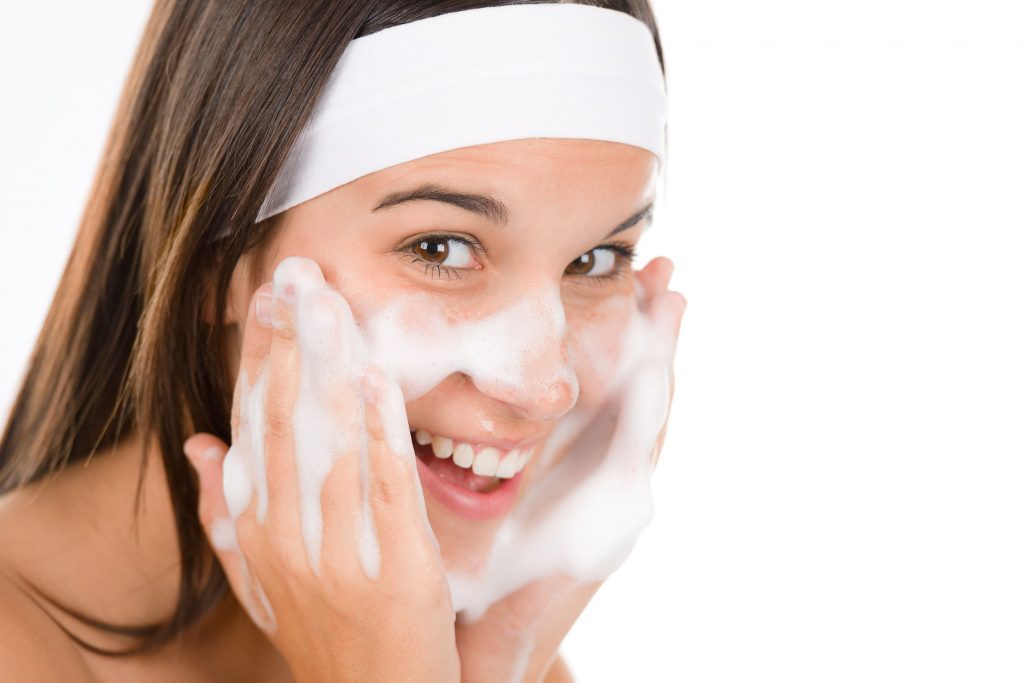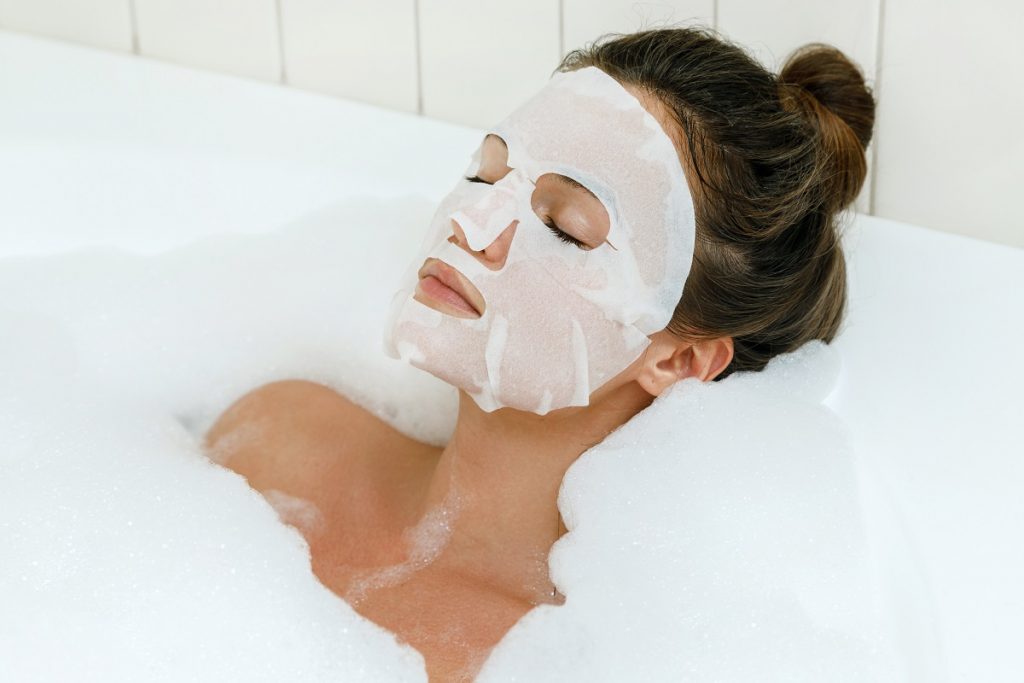When things get way too complicated in taking care of your skin, the rule of thumb is to go back to the basics. The diligent and dedicated process of fine-tuning one’s skincare collection from start to finish can be, at best, confusing and, at worst, perilous. So, when you’re lost in the sea of beauty buys, then it is a must to go back to understanding your basic skincare essentials. It is also equally detrimental that you build a facial care routine that starts with cleansing and clarifying in the morning to a nighttime ritual that includes hydrating and reparative must-haves.
Here we list down the basic facial care essentials that you must be aware of – what are they, why are they good for your skin, and how do you use them properly and effectively.
THE MUST-HAVE

These facial care products need to be present in your cosmetic wardrobe at all times, no ifs, no buts, no exceptions!
Cleanser
What is it: As the first step in all facial care routines, this soapy ritual gently clarifies pores and removes impurities (makeup, oil buildup, gym sweat).
Why is it good for your skin: When you’re really cleaning your skin properly, it will be pH-balanced as nature intended, and in a normal state. The thing is if your skin isn’t clean enough, what you put on top of it won’t matter—or penetrate properly.
How do you use it: Apply the cleanser in circular motions and count up to 15 while moving your fingers in circular motions across your face; this is my trick to ensuring skin is at its cleanest. The same rules apply for foaming, creamy, or oil-based cleansers. As the basis of your skin palette, cleanser should be used each morning (to remove sweat and any extra oil buildup) and night (a must for removing makeup and grime from the day). The cleanser is always the first step in your skincare routine.
Exfoliator
What is it: Whether mechanical (skin brushes, scrubbing granules) or chemical (acids, enzymes), exfoliators are integral for keeping skin radiant by unclogging pores of dry skin and dirt, stimulating cell turnover, respectively.
Why is it good for your skin: Your skin is going to look a little bit rosier and more alive when you use it. The mechanical formulations deep-clean the pores to remove surface-level oil, dirt, and dry skin, while chemical exfoliators work on a cellular level to promote collagen production and speed up cell turnover and regeneration. By doing so, exfoliators remove any obstacles that may block active ingredients from reaching deeper layers of the skin, so it’s an effective way to prepare the skin for treatment products.
How do you use it: Depending on skin type, mechanical exfoliators are recommended for use two to three times a week, while chemical exfoliators can be used daily (for those with sensitive skin, usage is more limited). It is immediately used after facial cleansing in the evenings.
Serum
What is it: Packed with active ingredients (antioxidants, vitamins), this formula is often potent and up for the task of protecting complexions from environmental elements (sun, pollution) and delivering luminosity and anti-aging effects to the skin. Its texture is thin, gel-like, and quick-absorbing.
Why is it good for your skin: Over time, depending on the formula, the active ingredients within the serum will allow the skin to appear more radiant and plump due to cellular regeneration and exfoliation. Fine lines and wrinkles will diminish and spots will lighten in color.
How do you use it: Every day, though it depends on your skin type to best determine when and what type of serum you should be using. Some serums benefit best from night use when most cell turnover occurs. For optimal results, apply around eyes, face, neck, and chest—don’t stop at the face. It is best used after toner, or post-cleansing if toner step is skipped. Also, it is important to remember that applying the serum in the morning lets it do its job all day long.
Moisturizer
What is it: An emollient (cream, oil, gel) that acts as a protective barrier to the skin. While its main purpose is to lock in moisture to smooth and soften the complexion, certain formulations will address other concerns such as anti-aging, pigmentation, and radiance.
Why is it good for your skin: Hydrated, well-treated skin will appear more luminous and smooth. It is also great to treat the fragile neck skin with an equal love of putting on the moisturizer.
How do you use it: It is a must during morning and night, as an essential step in your routine. This has to follow the serum.
Eye Cream
What is it: An emollient that hydrates and protects the sensitive ocular region. Under-eye skin does not produce any natural oils, which is why it often is the first area to show fine lines and wrinkles.
Why is it good for your skin: A smoother, more hydrated, and nourished eye area not only appears more youthful, but it’s also going to help prevent wrinkles, de-puff swollen eyes, and diminish under-eye bags. One should never go without an eye cream. It is the most delicate area on the face so it is definitely important to include it in your daily beauty routine for that extra nourishing boost. Use eye cream religiously to maintain skin’s elasticity, which is harder to harness in later years. Added bonus: Makeup will glide onto the skin better and not settle into any creases.
How do you use it: Eye creams are best used in the morning and night. The eye cream application follows a moisturizer application. Gently apply with the pad of your ring finger, lightly tapping product along the orbital bone.
Sunscreen
What is it: A spray, cream, gel or powder that provides protection against the sun’s harmful ultraviolet A (UVA) radiation, which causes cellular-level damage, and ultra-violet B (UVB) radiation, which causes surface-layer sunburns and pigment changes. Chemical sunscreens absorb the sun’s rays while mineral-based blockers reflect the rays away from the skin. To measure the amount of protection from UVB rays a sunscreen can offer, formulas are labeled with a sun protection factor (SPF) number, which determines the length of time someone can stay in the sun without sunscreen before receiving a sunburn.
Why is it good for your skin: According to experts, the number one aging element in the world is the sun. Once sun damage occurs at the cellular level, it’s incredibly hard to reverse, so prevention is key. And since sun damage from earlier years doesn’t present until the late 30s and 40s, it’s always the right time to protect against future damage.
How do you use it: To be applied each morning only. Sunblock only lasts two to three hours, after which your skin becomes more prone to UVA and UVB sun damage so reapply accordingly. If your daily moisturizer does not include an SPF of 30 or higher, add on an extra layer of sunscreen following your face cream.
THE SHOULD-HAVE

Here are the skincare items that you should have in your routine when needed.
Makeup Remover
What is it: Acting as a precursory cleanser, these water- or oil-based (ideal for waterproof mascaras) formulas will wipe away foundation, lipstick, and the most stubborn eye makeup.
Why is it good for your skin: Not only does it help keep bath linens pristine and makeup-free, it can make it easier to concentrate on cleaning the skin without any remnants of the day’s or night’s makeup application, and keep you from tugging or aggravating skin to remove persistent cosmetics.
How do you use it: If your cleanser is proven to remove both makeup and grime, a makeup-removing pre-step is unnecessary but recommended for days when extra makeup or waterproof formulations are required. When needed, this should be done prior to cleanser.
Masks
What is it: From detoxifying clay-based formulations that draw out impurities to serum-soaked sheet masks that deliver radiance-boosting properties to complexions, masks can offer an array of quick-fix treatment solutions.
Why is it good for your skin: It’s like a power boost for the skin but all masks are not created equal. The results depend on its ingredient composition, be they clarifying to hydrating. It’s a way to super-charge your skin that you can’t get with your daily routine.
How do you use it: At least once a week, depending on skin type. If you have a special event, a hydrating mask can—and should—be applied more than once during the week. After cleansing, prior to moisturizer. The serum step is skipped if a hydrating mask is used.
Blemish Treatment
What is it: Focused treatment for the banishment of blemishes.
Why is it good for your skin: Most acne spot treatments boast sulfur or benzoyl-peroxide as their main ingredient, which dries out the micro-infections that exist inside inflamed pores. Most effective when applied directly onto a blemish at its onset, and consistently until it vanishes.
How do you use it: When using the product as a spot treatment, best to use only once (or once a day), otherwise it can have the unintended effect of burning the good skin around the spot, prolonging healing time. It is applied after cleansing, prior to moisturizer.
THE COULD-HAVE

Though optional, these facial care products boost your skincare routine to the nth level. These beauty items will totally give your skin the ultimate pampering and care that it needs.
Face Oil
What is it: A blend of essential or hydrating plant oils to nourish the skin. Oils are best used at night since they’re a bit greasier and their molecular structure allows them to fully penetrate, versus simply sitting atop skin.
Why is it good for your skin: Skin will benefit from deeper hydration if you’re using an oil, but contrary to a common myth, it won’t make oily skin more oily. The most frequent cause of increased oil production is dry, dehydrated skin; however, when the skin is properly hydrated (in this instance, by a face oil) the pores will remain well balanced.
How do you use it: The application of face oil depends on skin type, and can vary as much as one time per day to one time per week. It can be used in place of moisturizer, and the application should follow the serum application.
Toner
What is it: Responsible for delivering astringent and/or hydrating properties to the skin (depending on its ingredient formulation) this silky, water-like texture lends itself to instant absorption into the skin.
Why is it good for your skin: Toner can help remove any leftover residue from cleanser, act as a mild exfoliator or an antiseptic, add an extra dose of moisture, or restore skin to its proper pH level. While most experts agree that toner is not a mandatory step, it’s entirely a personal preference.
How do you use it: Apply the toner with a cotton pad morning or night. It follows cleanser.
Night Cream
What is it: While day creams often include SPF, night creams offer targeted anti-aging ingredients designed to work in tandem with a cell’s regenerative period, which occurs when the body is at rest.
Why is it good for your skin: By increasing collagen production and reversing cellular damage by free radicals, night creams can make skin appear more supple. You can use one with gentle retinol for anti-aging and anti-acne effects or one with antioxidants to fight environmental aggressors and hyaluronic acid for visible hydration.
How do you use it: As coined, the night cream is applied every night, on the face, neck, and chest. This is the last step of your facial care routine at the end of the day.

